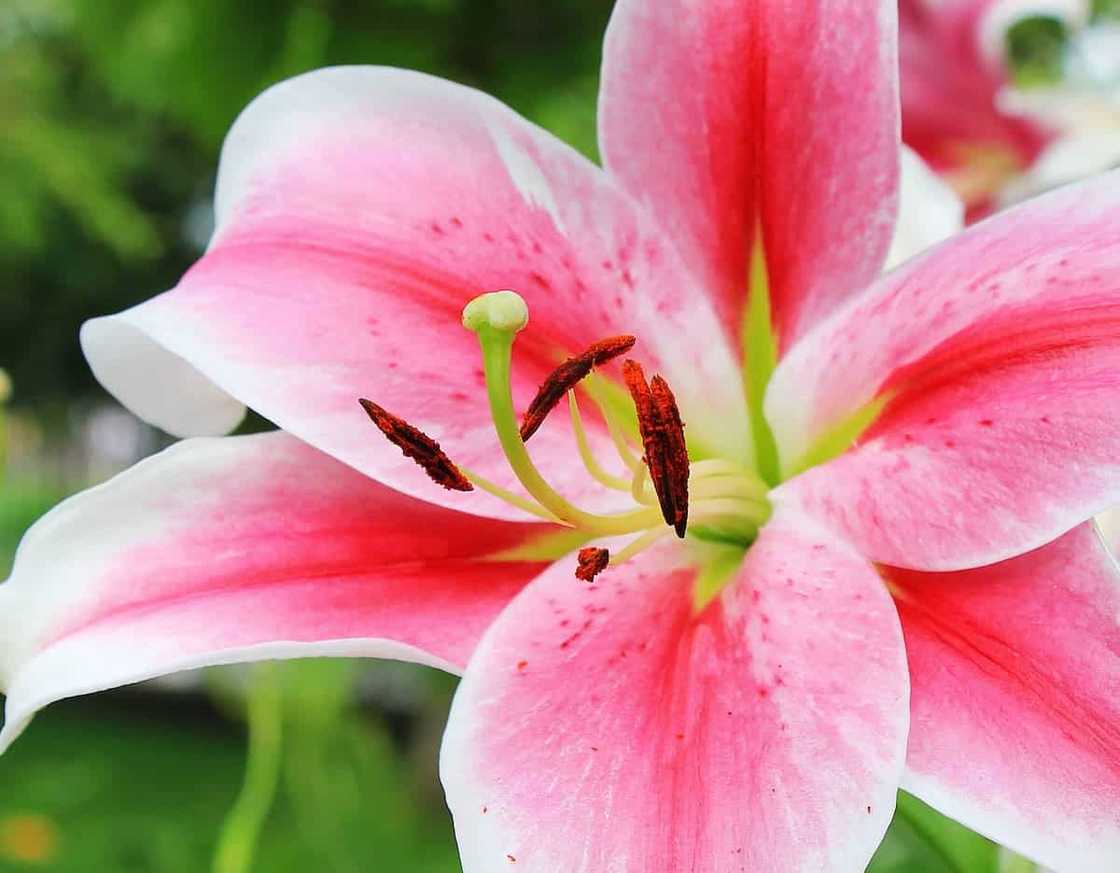When to transplant lilies: expert advice
When to transplant lilies? The answer to this question determines which varieties grace your garden, which climatic features, and how the lily will reproduce. With all these factors in mind, it is the choice of how to transplant lily in order to preserve and multiply their fragrant beauty.

Source: UGC
When to transplant lilies in spring and summer
The perennial flower called "lily" has become as popular as roses in recent years. Originally exotic plants, lilies are now grown around the world. Thousands of varieties have been bred, each with characteristics of outdoor maintenance.
Lilies are bulbous garden plants. As they grow, daughter lily bulbs form and it is important to separate them in time. Failure to do so will deplete the soil, weaken the flower and lead to smaller blooms. In such conditions, pests often appear, and the beautiful lily is easily ill.
When are lilies transplanted? Most varieties take about three or four years to grow bulbs. In general, all plants of the species are divided into two groups:
- growing fast (candidum, simply put: snow-white lily, tubular, Asian subspecies) that are planted 2-3 years after planting;
- varieties with slow-growing bulbs (American varieties, such as martagon) that are transplanted after 10 years.
When are lily transplants best? There is no clear answer to this question. It depends on when they have faded. It is looking after lilies after flowering that involves proper planting. And after the last bud wilts, it should take two to three weeks for the bulbs to the firm.

Source: UGC
Thus, the first case where spring lily transplants are carried out involves varieties that bloom in late autumn. Since no flowers are planted in the frozen ground, bulbs are removed from the ground at the end of October and put into storage:
- Immediately immersed in manganese for 30 minutes.
- Then they are placed in bags of holes and sprinkled with water-soaked sawdust.
- Leave in a cool cellar or vegetable compartment of the fridge until spring, when the lily is planted.
In the latter case, the lily transfer in spring is possible before bloom, that is, the end of April, depending on the variety. This can be done only before the first buds appear, so as not to harm the plant. How do you plant a lily in this case? They follow a simple method:
- Dig the plant and separate the daughter bulbs. The land is not being shaken off to make it easier to plant in a new place.
- They make landing holes at a distance of 15-20 cm.
- Immerse the bulbs in them, together with the stem, to a depth equal to their old places.
When to plant lilies in the summer? It is necessary to wait for the bush to rest, which happens only when not one flower remains. This means that it is possible to plant lily in the summer if the garden grows varieties that typically stop flowering completely in July, such as snow-white lilies.
How and when to plant lily in autumn

Source: UGC
When asked when to plant lilies and lilacs, gardeners confidently say, "In the autumn." This is because:
- most varieties bloom at the end of summer, after which the bulbs become quiet and easily transplanted;
- The following time until spring is just enough for it to take root, giving the plant a thick and lush color.
When can lily transplants be carried out? This must be done after flowering is over, but before frosts begin, otherwise the plant may perish. That is, the transplants are carried out from the beginning of September to the end of October, taking into account varietal features. Royal lilies, for example, are suitable for early autumn planting, and tubular varieties and eastern hybrids are suitable during October.
How to plant lilies? First, do the following:
- They choose a new place. Lilies love quiet and well-lit locations. When planting in an old place, the topsoil should always be replaced;
- Prepare a soil of neutral acidity with a high amount of nutrients. For this purpose, it takes a puddle or peat mixture with the ground. Superphosphates are added as mineral fertilizer;
- prepare drainage or make drainage grooves to keep moisture from saturating the soil around the lilac.
There comes a point when digging lilies for transplants becomes possible. They do this by:
- It cuts off the above-ground part.
- Gently dig out the bulbs and clear them of the earth.
- They separate the new bulbs.
- Remove the stem, as well as any damaged or dead scales.
- They cut off the broken roots leaving up to 15cm of healthy roots.
- Decontaminate the bulbs with a solution of manganese (15 minutes) or carbophos (half an hour) made from 1 teaspoon per 5 liters of water.

Source: UGC
Lily transplants in the autumn are performed according to instructions:
- Determine the depth and distance of the landing. The bigger the bulbs, the deeper the holes are. The distance between them depends on the height of the flower. Tall people are recommended to reach around 20cm, medium to 25cm, and high people around 30cm.
- Drainage is being prepared. To do this, sand is placed on the bottom of the holes and a bulb is placed on top with the roots spread out.
- Above, they make a layer of nutritious soil and water it generously.
- Then cover the soil with peat.
In order to successfully transfer lilies in the fall, it is recommended to heat them immediately. A layer of sawdust or dry leaves about 15 cm thick is placed over the top, and a polyethylene or old boards are applied.
It is also important to remember that lilies do not need abundant irrigation. Flowers are far easier to tolerate minor droughts than excess water, from which bulbs rot easily. Moreover, organic fertilizers are not used in plant maintenance. For lily species, it is preferable to forage for mineral origin.
Only Asian subspecies can be transplanted all year round, but even then it is best to wait until the flowering has finished avoiding harming them.
Agree, the rules are simple, so it is enough to make a transplant once, to take care of your favorite flowers competently.
Source: KAMI.com.gh






